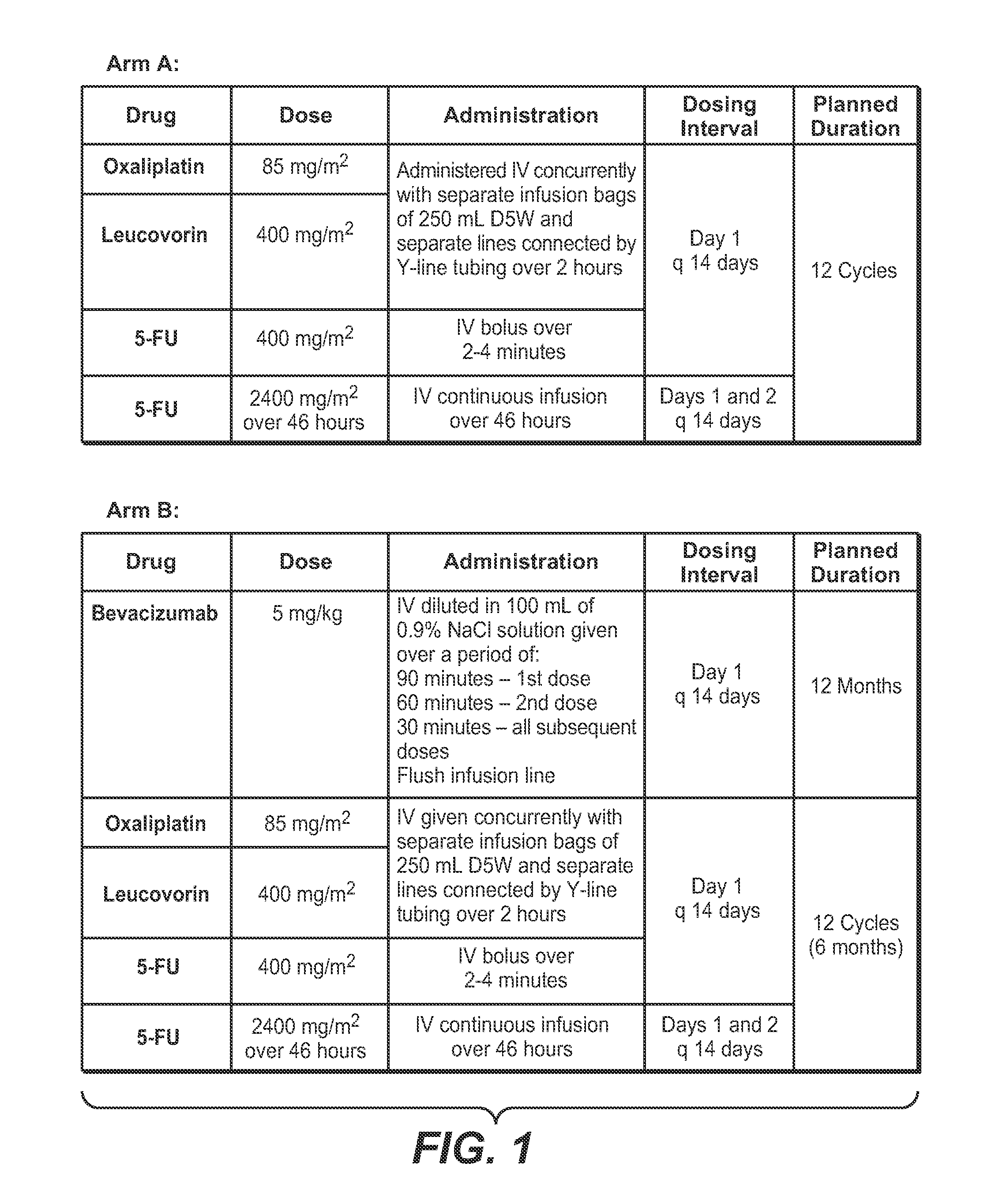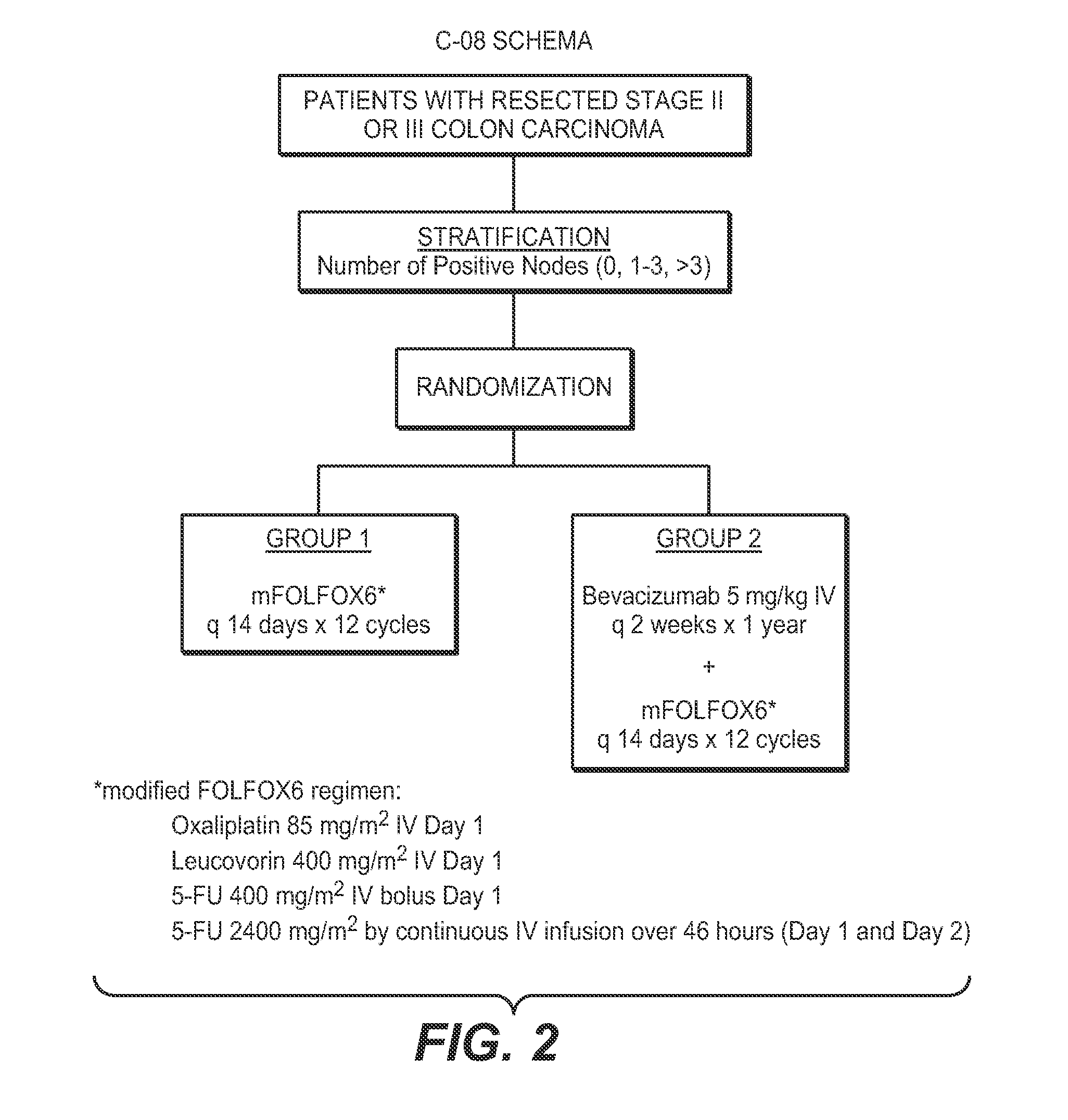Adjuvant cancer therapy
a cancer therapy and adjuvant technology, applied in the field of human diseases and pathological conditions, can solve the problems of high cost, high side effects, and difficult detection and treatment, and achieve the effects of reducing or preventing the occurrence or proliferation of micrometastases, and preventing or reducing the likelihood of cancer recurren
- Summary
- Abstract
- Description
- Claims
- Application Information
AI Technical Summary
Benefits of technology
Problems solved by technology
Method used
Image
Examples
example 1
Bevacizumab Adjuvant Therapy in Patients with Colorectal Cancer
[0242]This example concerns analysis of results obtained from colorectal cancer subjects treated in the National Surgical Adjuvant Breast and Bowel Project (NSABP C-08) clinical trial. The primary aim of the study was to determine the clinical benefit of adding bevacizumab to standard chemotherapy for treating colorectal cancer, as measured by disease-free survival (DFS). A secondary goal was to determine if there was clinical benefit in prolonging overall survival. The standard chemotherapy used in this trial was a combination of leucovorin, 5-fluorouracil and oxaliplatin. This trial evaluated the efficacy of bevacizumab (AVASTIN®) as adjuvant therapy for patients with resected stages II and III carcinoma of the colon.
Study Design
[0243]The design of the NSABP C-08 study is depicted in FIGS. 1 and 2.
[0244]In the NSABP C-08 trial, the following treatment protocol was used:
[0245]Arm A / Group 1: modified FOLFOX6 (mFOLFOX6: o...
PUM
| Property | Measurement | Unit |
|---|---|---|
| Time | aaaaa | aaaaa |
| Time | aaaaa | aaaaa |
| Time | aaaaa | aaaaa |
Abstract
Description
Claims
Application Information
 Login to View More
Login to View More - R&D
- Intellectual Property
- Life Sciences
- Materials
- Tech Scout
- Unparalleled Data Quality
- Higher Quality Content
- 60% Fewer Hallucinations
Browse by: Latest US Patents, China's latest patents, Technical Efficacy Thesaurus, Application Domain, Technology Topic, Popular Technical Reports.
© 2025 PatSnap. All rights reserved.Legal|Privacy policy|Modern Slavery Act Transparency Statement|Sitemap|About US| Contact US: help@patsnap.com


